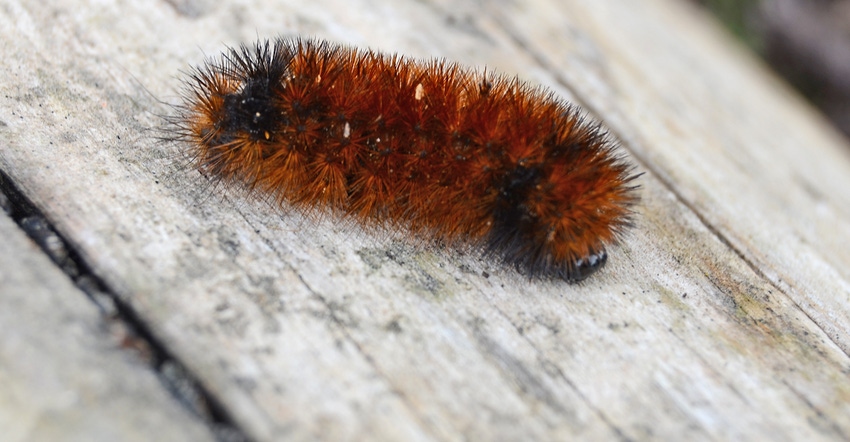
There it was right outside my front door, inching its way across a wooden log. I cringed when I saw it. "C'mon," I said aloud — since I live in the country and no one would hear. "You've got to be kidding me. A mild winter!" The rust-colored woolly worm kept crawling, almost taunting me.
Woolly worms are actually the larval stage of the isabella tiger moth. There are 60 species of tiger moths in Missouri, according to the Missouri Department of Natural Resources. However, larvae are better recognized than the adults because they are the fuzzy, stiff-haired caterpillars. They are usually black on the ends of the body and rusty red or brownish in the middle.
My grandmother taught me to read the colors of the woolly worm at a young age. Playing in the farmyard, I scooped up the prickly creatures in my hand and raced to her house. Sitting on the porch she would tell me her winter predictions based on color.
If it was mostly rust or red, it would be a mild winter. A black body meant we had better hunker down for a doozy of a cold, snowy three months, she said. And if it was split about half red and half black, according to my grandmother, it was anyone's guess.
Some woolly worm enthusiasts go beyond her expertise and predict winter weather based on the 13 segments of the worm's body. They contend each segment represents one week of winter. Orange segments predict mild weeks, and black ones portend bad winter weather. Individuals buying into this train of thought may be one of the 17,000 who gather every October in Banner Elk, N.C., for the Woolly Worm Festival. The event even offers prediction contests with prize money.
Honestly, I never kept track of if my grandmother's predictions were right or wrong. Apparently, scientist have studied the color of woolly worms and winter weather and found no correlation.
Still, a little folklore and a little of my grandma causes me to stop and shudder at the red woolly worm. We could really use some moisture in my neck of the woods after this dry 2018, even if it comes in the form of heavy snows. I may just head to the woods in search of a completely black woolly worm — it might just improve my odds for a white winter.
About the Author(s)
You May Also Like






